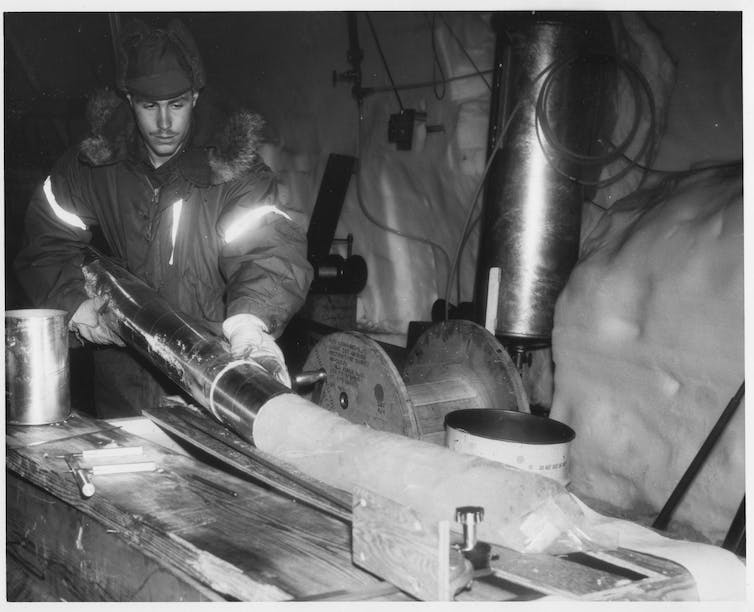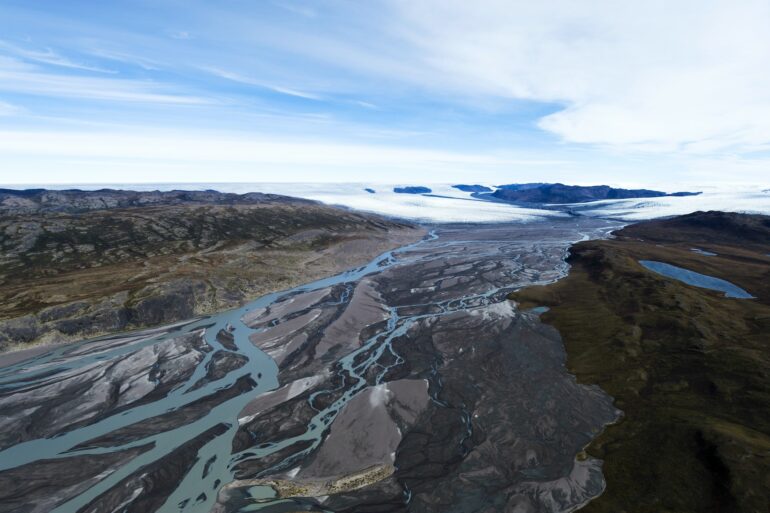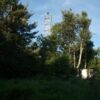About 400,000 years ago, large parts of Greenland were ice-free. Scrubby tundra basked in the Sun’s rays on the island’s northwest highlands. Evidence suggests that a forest of spruce trees, buzzing with insects, covered the southern part of Greenland. Global sea level was much higher then, between 20 and 40 feet above today’s levels. Around the world, land that today is home to hundreds of millions of people was under water.
Scientists have known for awhile that the Greenland ice sheet had mostly disappeared at some point in the past million years, but not precisely when.
In a new study in the journal Science,
we determined the date, using frozen soil extracted during the Cold War from beneath a nearly mile-thick section of the Greenland ice sheet.
A brief look at the evidence beneath Greenland’s ice sheet and the lessons its holds.
The timing – about 416,000 years ago, with largely ice-free conditions lasting for as much as 14,000 years – is important. At that time, Earth and its early humans were going through one of the longest interglacial periods since ice sheets first covered the high latitudes 2.5 million years ago.
The length, magnitude and effects of that natural warming can help us understand the Earth that modern humans are now creating for the future.
A world preserved under the ice
In July 1966, American scientists and U.S. Army engineers completed a six-year effort to drill through the Greenland ice sheet. The drilling took place at Camp Century, one of the military’s most unusual bases – it was nuclear powered and made up of a series of tunnels dug into the Greenland ice sheet.
The drill site in northwest Greenland was 138 miles from the coast and underlain by 4,560 feet of ice. Once they reached the bottom of the ice, the team kept drilling 12 more feet into the frozen, rocky soil below.

George Linkletter, working for the U.S. Army Corps of Engineers Cold Regions Research and Engineering Laboratory, examines a piece of ice core in the science trench at Camp Century. The base was shut down in 1967.
U.S. Army Photograph
In 1969, geophysicist Willi Dansgaard’s analysis of the ice core from Camp Century revealed for the first time the details of how Earth’s climate had changed dramatically over the last 125,000 years. Extended cold glacial periods when the ice expanded quickly gave way to warm interglacial periods when the ice melted and sea level rose, flooding coastal areas around the world.
For nearly 30 years, scientists paid little attention to the 12 feet of frozen soil from Camp Century. One study analyzed the pebbles to understand the bedrock beneath the ice sheet. Another suggested intriguingly that the frozen soil preserved evidence of a time warmer than today. But with no way to date the material, few people paid attention to these studies. By the 1990s, the frozen soil core…



